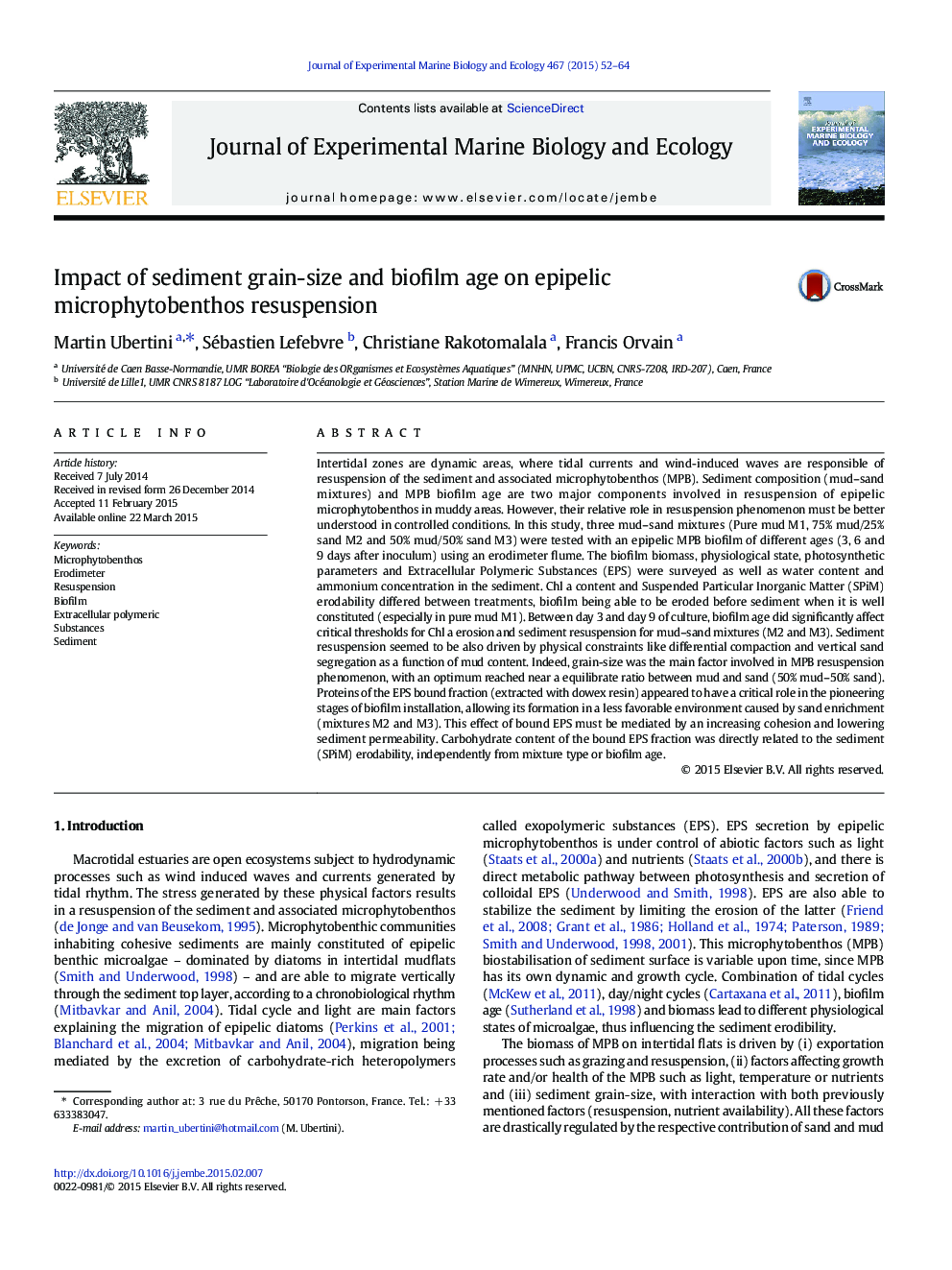| کد مقاله | کد نشریه | سال انتشار | مقاله انگلیسی | نسخه تمام متن |
|---|---|---|---|---|
| 4395383 | 1618408 | 2015 | 13 صفحه PDF | دانلود رایگان |
عنوان انگلیسی مقاله ISI
Impact of sediment grain-size and biofilm age on epipelic microphytobenthos resuspension
ترجمه فارسی عنوان
تاثیر اندازه دانه و زمان بیوفیلم رسوب در بازیابی میکرو فیوو بنتوز اپیپلیک
دانلود مقاله + سفارش ترجمه
دانلود مقاله ISI انگلیسی
رایگان برای ایرانیان
کلمات کلیدی
موضوعات مرتبط
علوم زیستی و بیوفناوری
علوم کشاورزی و بیولوژیک
علوم آبزیان
چکیده انگلیسی
Intertidal zones are dynamic areas, where tidal currents and wind-induced waves are responsible of resuspension of the sediment and associated microphytobenthos (MPB). Sediment composition (mud-sand mixtures) and MPB biofilm age are two major components involved in resuspension of epipelic microphytobenthos in muddy areas. However, their relative role in resuspension phenomenon must be better understood in controlled conditions. In this study, three mud-sand mixtures (Pure mud M1, 75% mud/25% sand M2 and 50% mud/50% sand M3) were tested with an epipelic MPB biofilm of different ages (3, 6 and 9Â days after inoculum) using an erodimeter flume. The biofilm biomass, physiological state, photosynthetic parameters and Extracellular Polymeric Substances (EPS) were surveyed as well as water content and ammonium concentration in the sediment. Chl a content and Suspended Particular Inorganic Matter (SPiM) erodability differed between treatments, biofilm being able to be eroded before sediment when it is well constituted (especially in pure mud M1). Between day 3 and day 9 of culture, biofilm age did significantly affect critical thresholds for Chl a erosion and sediment resuspension for mud-sand mixtures (M2 and M3). Sediment resuspension seemed to be also driven by physical constraints like differential compaction and vertical sand segregation as a function of mud content. Indeed, grain-size was the main factor involved in MPB resuspension phenomenon, with an optimum reached near a equilibrate ratio between mud and sand (50% mud-50% sand). Proteins of the EPS bound fraction (extracted with dowex resin) appeared to have a critical role in the pioneering stages of biofilm installation, allowing its formation in a less favorable environment caused by sand enrichment (mixtures M2 and M3). This effect of bound EPS must be mediated by an increasing cohesion and lowering sediment permeability. Carbohydrate content of the bound EPS fraction was directly related to the sediment (SPiM) erodability, independently from mixture type or biofilm age.
ناشر
Database: Elsevier - ScienceDirect (ساینس دایرکت)
Journal: Journal of Experimental Marine Biology and Ecology - Volume 467, June 2015, Pages 52-64
Journal: Journal of Experimental Marine Biology and Ecology - Volume 467, June 2015, Pages 52-64
نویسندگان
Martin Ubertini, Sébastien Lefebvre, Christiane Rakotomalala, Francis Orvain,
